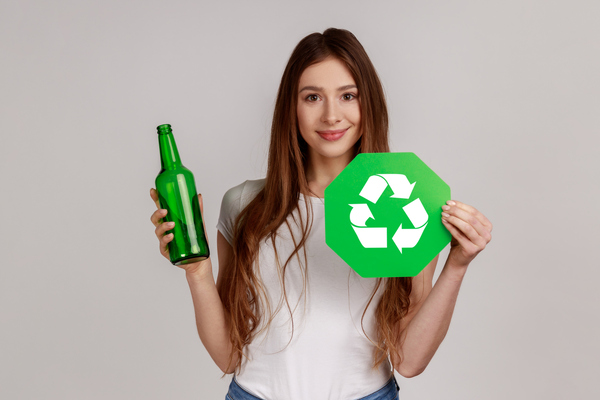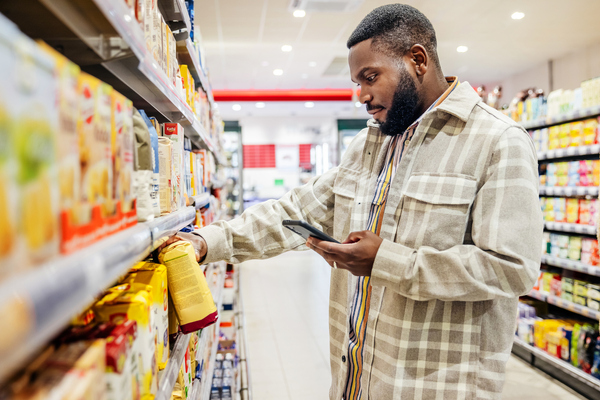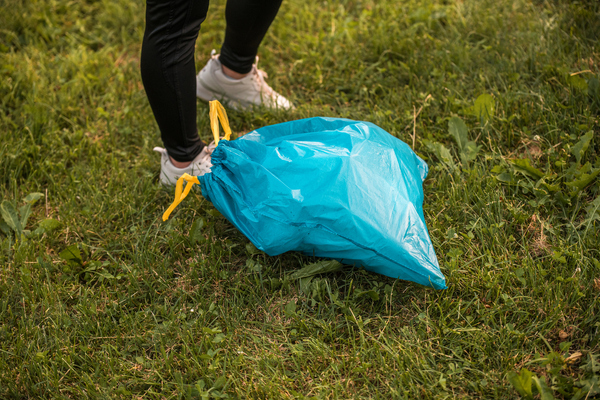The packaging crossroads for marketing
Sponsored by Chartered Institute of Marketing
by James Delves, Head of External Engagement, Marketing, CIM
Commercial packaging has been in use for centuries, seen as not just an essential way to ensure that food products are fit for consumption, but also by marketers as a means to make products truly iconic. Coca-Cola isn’t perceived by millions as being a brown, sugary liquid – it’s a cold glass bottle with beads of moisture running down the side, instantly driving cravings. The same is true for Toblerone, Heinz ketchup, Doritos... the list of memorable brand packaging goes on.
But the added value of even a great design is no longer enough. In late 2017, the BBC aired its long-awaited sequel to the original Blue Planet documentary, and in doing so laid bare the vast scale of the impact discarded packaging is having on the world. Alongside growing public awareness, this galvanised the marketing sector to see eco-packaging as an opportunity and to look beyond packaging to supply chains and the sourcing of materials. Almost 20 months later, a long, diverse list of organisations have modernised their packaging by reducing the use of plastic and other potentially damaging materials. This list includes Aldi, Burberry, Costa, Dell, Evian, Carlsberg, Coca-Cola, Iceland, Morrisons, Nestlé, IKEA, Lidl, McDonald’s, Tottenham Hotspur, Volvo and Walmart just for starters. Asda alone reported that it had saved 6,500 tonnes of plastic last year by changing or removing packaging from some of its own-brand products.
A new battle on the high street
Packaging is, for many retailers, the new battleground of the high street. Concern among shoppers regarding the use of plastics has left many retailers to race towards plastic-free aisles, requiring whole supply chains to rethink their offerings. It’s no longer good enough for brands to focus on what a product will look like among its competitors on a crowded supermarket shelf. Marketers need to ask questions such as: how robust is the packaging? How easy is it to store in the refrigerator/cupboard and will the brand still be visible? Is it easy to open and use? How easy is it to recycle? Brands that ignore any element of this can put themselves at a major disadvantage with savvy high-street consumers. Choice is changing too. Challenger brands who can move quicker than their more established rivals are leapfrogging onto supermarket shelves using environmental packaging credentials. Innovation and creativity are driving success at a number of levels, from the ability to standout on shelves, to new storage and opening techniques – every interaction a consumer has with packaging, is now an opportunity for a brand to build a relationship.
The power of honesty
That requirement to understand the needs of consumers and have consumers relate to brands has fuelled innovative marketing campaigns. Brands have increasingly highlighted aspects such as innovative packaging, ethical supply chains, recyclable materials, and the rise of eco-impassioned spokespeople. Last year, the Chartered Institute of Marketing (CIM), the Consumer Goods Forum, and global change agency Futerra conducted research to address consumer demand for more transparency in packaging and products sold around the world. The result, The Honest Product Guide, revealed that global consumers are hungry for more transparency in the production of products. 70 per cent of respondents stated that they were more interested in the make-up of the products they buy than the actual companies that made them. Such was the interest that a growing number of consumers now expect packaging to state information such as which materials are used – looking at their impact on society and the environment – as well as product labels supplying details of the supply chain.
At a crossroads
In the eyes of marketers, packaging has a pivotal role in addressing a range of consumer requirements. It provides a key communications role portraying brand values through design and imagery. Now marketing teams at food companies are going further by responding to consumer expectations around wider factors such as food waste, by using packaging to extend shelf lives significantly. As packaging becomes more important as a communication channel, marketing departments will face new challenges. For example, the desire to meet consumer demand to show off green credentials or support of a cause must be balanced with a brand’s identity, or the very thing that attracted the consumer to the brand in the first place could be lost. How key messages are displayed is also critical. The Daily Telegraph reported that shoppers must now interpret 58 symbols for recycling alone, leading to widespread confusion about what can and cannot be put into kerbside collections. While it might take a bit more time to refine aspects like recycling information, when brands do get it right the benefits are huge. One good example is Lush, which sells natural, handmade beauty products. The company aims to source the best, safest and most beautiful ingredients, never to test on animals, and champions reduced packaging. Lauded in the press for its approach, in 2018, Lush posted record pre-tax profits of £73.5 million, up from £43.2 million in the previous year. There’s no doubt that when it comes to packaging the marketing industry is at a crossroads. Marketers face an exciting opportunity, and if teams can leverage engineers and R&D to develop great designs and drive awareness while meeting changing consumer needs, success should follow. Those that can combine these factors as successfully as Lush should not only profit but drive an even closer relationship with their consumers.
Business Reporter Team
Related Articles
Most Viewed
Winston House, 3rd Floor, Units 306-309, 2-4 Dollis Park, London, N3 1HF
23-29 Hendon Lane, London, N3 1RT
020 8349 4363
© 2025, Lyonsdown Limited. Business Reporter® is a registered trademark of Lyonsdown Ltd. VAT registration number: 830519543





